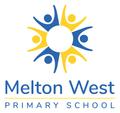Year 1/ 2

Reading
As we wrap up term 3, we are thrilled to share the incredible progress our grade one and two students have made in their reading journey. This term, students have continued to build on the skills developed throughout the year, diving deeper into their understanding of text and expanding their comprehension abilities. They have engaged in a variety of activities designed to enhance their vocabulary, inferential thinking, and ability to make connections between different texts and their own experiences. Let's take a look at the exciting learning adventures they've had this term!
Here's a glimpse into what our students have been learning in Reading this term:
- Recognising Emotions: We began the term by focusing on recognising emotions. Students used emotion cards to act out different emotions while their partners guessed which emotion was being portrayed. This activity helped students better understand and empathise with characters in stories.
- Building Vocabulary: Throughout the term, students expanded their vocabulary by identifying new words in texts and unpacking each word using a vocabulary graphic organiser. This strategy helped deepen their understanding of the language used in stories.
- Inferring: Students learned the skill of inferring, which involves using prior knowledge and clues from the text to figure out what the author hasn’t explicitly stated. They practised this skill by looking at the front cover of different Mentor texts describing what they could see, and making predictions about the story. We continued to explore inferring by examining how characters act, speak, and think to understand their feelings and traits.
- Making Connections: Students also worked on making connections with texts. They practised identifying text-to-self and text-to-text connections, which helped them relate their own experiences to the stories they read and better understand different perspectives.
- Participating in the Sounds-Write Program: Some students participated in the Sounds-Write program, using the "Pip and Tim" stories to focus on new words each week. This program reinforced their phonics skills and helped them become more confident readers.
- Books We Explored: We read and discussed a variety of books, including:
- I'm Not Cute! – with vocabulary words like sleek, sharp- eyed, and drifted.
- The Rainbow Fish – with words like glide, shimmer, shiny, and dazzling.
- Harriet, You'll Drive Me Wild! – with words like pesky and dribbled.
- Elmer – with words like slipped, gosh, golly, and ordinary.
- Edward the Emu – with words like bore, basked, and snarled.
- Peggy – with words like blustery, gust, scooping, thud, ruffled, and flock.
- Tilly – with words like treasure, precious, and glistening.
We are incredibly proud of the progress our students have made this term in Reading. They have shown great enthusiasm and dedication in developing their reading skills. We look forward to continuing this journey in Term 4!
Writing
The Grade 1/2 students began the term learning about Poetry. Throughout this term students have explored exemplar poems to develop their understanding of structure and language devices in different poems. The students have written different types of poems including Alliteration, Shape (Concrete) and Simile Poems. When writing Shape Poems, or Concrete Poems, students were learning to form their writing into the shape of its subject. Students were learning to use language features such as adjectives, verbs and adverbs and were able to be visually creative in the way they published their writing. Students focused on using similes and understanding how to use comparisons to compare one thing with another when writing Simile Poems. These poems also included the use of verbs and adverbs. The final poem they explored was Alliteration. Students enjoyed being creative with repeated sounds and consolidated their understanding of letter sounds and spellings. Our students embraced creativity during our Poetry unit and developed their ability to expand on their vocabulary and gained confidence in writing.
For the remainder of the term, students have been learning about Narratives. Throughout the Narrative unit students have worked hard to develop their narrative writing skills, and their growth as storytellers is something to be proud of. We have focused on the key elements of a narrative, including creating interesting characters, building vivid settings as well as developing a clear beginning, middle and end. The students have learnt how to structure their stories and use descriptive language to create captivating narratives.
Throughout this term, the teachers in 1/2 have been conducting daly Sounds Write lessons. The Sounds Write Phonics Program focuses on teaching the foundational relationship between sounds and letters, helping students understand how words are built and decoded. Through these structures, sequential lessons, students have been learning to blend sounds, segment word and develop an understanding of spelling patterns. The Grade 1/2 students have thoroughly enjoyed these lessons and have displayed a sense of confidence when participating in the activities.
Well done to all the Grade 1/2 students on a successful term in Writing. Keep up the excellent work!
Mathematics
This term in Mathematics the students learnt a range of skills through Number and Algebra topics. To begin the term, students learnt to identify and apply counting patterns and used this knowledge to support them in solving financial maths problems. From Week 4 onwards, the Number and Algebra focus moved towards learning about Multiplication and Division. In this unit students learnt to extend on their addition and subtraction skills to solve problems. They used groups to represent their understanding of strategies to solve multiplication and division problems and used number lines to support their counting. They explored the understanding of equal grouping and equal sharing through hands-on activities by using teddy bears or unifixes, where they shared one by one.
This term the Grade 1/2 students have completed a range of topics to develop their Measurement and Geometry skills. At the beginning of the term students learnt about Location. Throughout this unit the students used maps and directional language to give and follow directions. They then focussed on Area to follow on from their learning of 2D shapes last term. During the unit Area, students used informal units of measure such as hands, sticky notes or counters to estimate and measure the area of common objects. Students also compared the area of objects measured. Towards the end of term, in the Measurement and Geometry unit students focused on 3D shapes. During this unit students identified the features of 3D shapes and used these to identify and sort 3D shapes.
Inquiry
During Inquiry this term students explored a unit titled ‘Back When’. By the end of this unit, students were able to identify and describe the features of places and changes in these, at a local scale. (Melton and surrounding suburbs.) Students also identified how people are connected to different places and explained the value of these places to people. Students described different ways that places can be cared for.
The key concepts studied are Change and Continuity, and the key understanding students learned is that it is important to recognise and preserve aspects of the past in our local community.
The unit also focused on key questions such as:
- How have changes in technology shaped our daily life?
- What remains of the past are important to the local community? Why?
Science
This term in Science, students have focussed on the Physical Science strand where we have been learning how a push and pull force affects how an object moves or changes shape.
Students observed and modelled the different ways that objects moved and changed shape, and explored which forces enabled objects to move. Through investigations and observations, students explored, tested and recorded the effects of the push, pull and gravity forces through a variety of different experiments. They conducted experiments of gravity for books , paper and paper- helicopters and various other objects. They also created games of friction, push and pull by using various resources like: dominoes, marbles, balls, tubes etc. They completed some activities about push and pull also. Students learnt about six simple machines also in the same context. Some glimpses of their hard work this term can be seen here under:
Art
What a great Term 3 we’ve had in Art! This term, Grade 1 / 2 have explored the elements of shape and form. Art activities involved lots of discussion and experimentation. The students worked with a variety of 2D and 3D shapes to create their own individual artworks. They also looked at the work of professional artists (e.g. Picasso) as a reference and guide to help them to understand some of the concepts they have used. Indigenous artworks were incorporated into some sessions and a variety of materials were used to create mixed media art artworks. Congratulations Grade 1/ 2 on another wonderful term of Art!
PE
During this term the grade 1/2 students have focused on a range of different sporting activities to help in the continued development of the fundamental motor skills. The two main topics were basketball and rugby. In each of these sports the Grade 1/2 students have attempted to develop their skills in these sports and apply those skills in a games-based setting. This was enjoyed by all students as engagement levels were high across all activities. At the completion of this unit our students can now pass, dribble, and shoot the basketball and are attempting to play in mini games of basketball. For the second half of the term the focus was on the sport of rugby. We have worked on the skills of throwing and catching when playing rugby and attempted to play in games. The students now have a better understanding of the rules for this sport and made great progress with their skill development. This term was a blast, and I can’t wait for continued growth and development for the grade 1/2 students in term 4.
Music
This term, in Music, the students combined their understanding of pitch and rhythm patterns in singing and playing simple songs and melodies. They learnt about formal notation and used this to read and write simple musical compositions. The students read graphic notation to keep the beat and explore rhythm patterns. As they focused on learning new songs, they improved the pitch of their voices and played accompanying rhythm patterns on percussion instruments. The students responded to songs and music with movement, voice and body percussion and they extended their experience of the musical elements of dynamics, tempo and texture by listening and responding to a range of music from different times and cultures. Students worked cooperatively in small groups and as a whole class to perform and celebrate their achievements.
LOTE
During Term 3 2024 in Auslan, Grade 1/2 students increased their lessons to twice a week. They learned about:
- Deaf Culture
- Feelings
- Greeting and Questions
- Around the House
- Sea Animals
- Days of the Week and Months of the Year
- Numbers 1-20
- Weather
- Fruit
- Zoo Animals
- Wh Questions
- Handshapes
- HOLM+ NMF (Handshapes, Orientation, Location, Movement and Non-Manual Features)
- Feelings (extending on previous learning about feelings)
- About Me
- Clothing
- Medical/Health.
The Auslan signs for these topics were the core learning to extend in future Auslan learning. Lessons consisted of explicit teaching through videos, supported by activities, games, stories, songs, poems and group practice. Learning Auslan involved both expressive (signing) and receptive understanding skills (reading back what others’ sign), hence lesson activities continued to develop these skills. At this level, the students mainly worked in whole groups, managed by the teacher and were provided with the opportunity to reflect on their learning together. Students began to understand what Auslan communication is about, by watching Deaf adults signing on the videos. At this level the teacher guided and supported the students’ learning, as they also continued to develop their own skills.





















